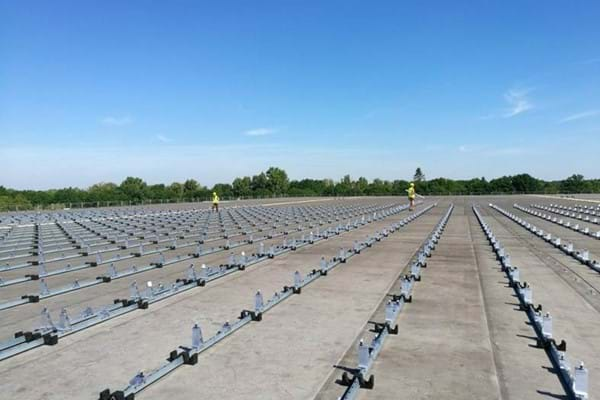Over the past few years, enormous numbers of solar panels have been installed all over the world. The Netherlands’s share is becoming increasingly larger, certainly in a European context. There are many different brands of solar panels, converters and mounting material that can be used to realize a project. That makes it difficult to make the right choice. Particularly as far as quality is concerned.
Why is the choice of a good substructure so important?

The mounting system is an underexposed part of the solar installation.
After installation, this is no longer visible and there is often not enough knowhow to make an accurate assessment. 'Because the mounting system "supports your investment" it is a very important part of the total installation,' says Denis de Vette, Managing Director of Van der Valk Solar Systems. This producer of top-class solar mounting systems gives high priority to innovation, reliability, and service.
A solar installation is susceptible to a wide range of external influences.

For example, severe storms, snow, rain, etc. To withstand the elements, the solar panels must be mounted in such a way that they achieve their life span of sometimes more than 25 years. De Vette: 'We often hear people say: "I’ve been doing this for years and never had any problems"'. But they forget that severe storms don’t occur every year. And that begs the question of whether they are familiar with all of the possible problems. A broken tile due to a weak mounting system is sometimes only discovered after several months/years because of a leak, and a system on a flat roof has been displaced by the wind can damage the roof and reduce energy production, which is not immediately evident.
The materials that are used are also important. Weather conditions such as rain and aggressive environments can corrode materials. Aluminium, steel, and stainless steel are frequently-used materials. But the thickness of the materials is also important. An aluminium profile that is too thin can be a reliable material in itself but is too weak for the task at hand. A wide range of manufacturers can produce certificates for the system in question. That is a good thing but it is important to check exactly what has been certified. A certificate is not always a guarantee, because sometimes only part of the installation has been tested.
Good stability and grounding are very important for the safety of people working on a solar installation. A good mounting system makes this possible and should be made entirely of metal to ensure good conductivity. Also be sure to check that the cables have been neatly tucked away; this is called cable management.
A strength calculation must be made for every situation.
This strength calculation determines aspects such as the number of roof hooks for a pitched tiled roof and the amount of ballast to be used for a flat roof. Factors that must be taken into account include the strength of the roof itself, the wind area, the height of the building, and whether the solar panels are also being installed on the edges and corners of the roof. The calculations to be made for these factors are supplemented in the Eurocodes with national annexes for the country in which the solar panels are being installed. In particular cases, this is supported by wind-tunnel tests. With wind-tunnel tests, make sure that the test is representative for your situation; otherwise it is worthless.
Denis de Vette concludes: 'Over the years, Van der Valk Solar Systems has supplied mounting systems for several million solar panels. And safety has always been priority number 1. When we tell our customers that it is not possible to do it safely, then it really isn't. Everything must score 10 out of 10 because 9 out of 10 isn’t good enough.'